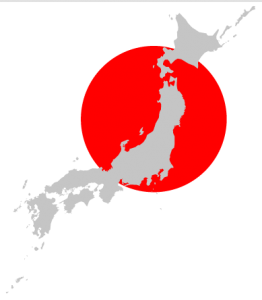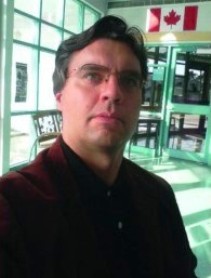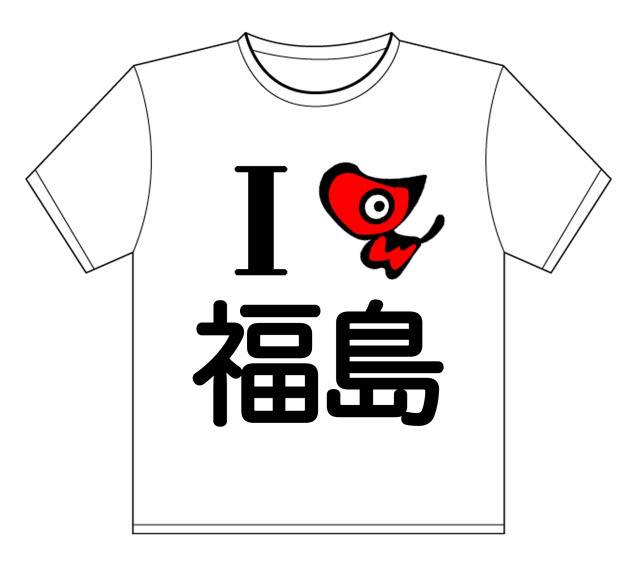WIT Life #167: Japan and War as Seen Through the Lens of Film
WITLife is a periodic series written by professional Writer/Interpreter/Translator Stacy Smith (Kumamoto-ken CIR, 2000-03). She starts her day by watching Fujisankei’s newscast in Japanese, and here she shares some of the interesting tidbits and trends together with her own observations.
Recently I had the chance to see two films from 2010 that examine the issue of Japan and war. One was Anpo: Art x War which was screened at Columbia University last week, and the other is Caterpillar currently being shown at the IFC Center through this Thursday. The former is a documentary directed and produced by Linda Hoaglund, and the latter is a film made by the director Koji Wakamatsu of United Red Army fame (shown at Japan Society a few years ago and coming to IFC later this month).
Anpo uses a mixture of paintings, photos, anime, films and music by Japanese artists to Read More
Sankei Shimbun article about Taylor Anderson
Thanks to JETAA Music City President Terry Vo for sharing this an very moving article (in Japanese) written by Yoshihisa Komori about Taylor Anderson. Komori-san went to visit Taylor’s parents for the interview.
Update 05/10/11: Thanks to Jo McCarthy (Shimane-ken, Okuizumo-cho) of the JET Alum Translators/Interpreters group on LinkedIn for providing an English translation.
“The death of a woman who loved Ishinomaki”
by Yoshihisa Komori; translated by Jo McCarthy (Shimane-ken, Okuizumo-cho)
http://sankei.jp.msn.com/world/news/110504/amr11050402570003-n1.htm
I was immediately reminded of the old film “Gone With The Wind.”
This was because the large mansion I arrived at after leaving the extensive lush green woods had white pillars and a porch, which rose elegantly in the traditional style of the southern United States. At the rear of the residence, the green gently sloping gardens extended as far as the James River.
Why, I wondered, would a young American woman who grew up in an environment such as this, be fascinated by the town of Umibe in the Tohoku region of Japan?
This was the house of the parents of Taylor Anderson – the English teacher who was caught in a tsunami in Ishinomaki City, Miyagi Prefecture, following the Great East Japan Earthquake of March 11, and died.
It’s in the quiet hills on the outskirts of Richmond, capital of the state of Virginia.
In the spacious living room Taylor’s father Andy, who manages a real estate company, and her mother Jean, a housewife, (both 53) spoke quietly of their thoughts about their eldest daughter, who was 24 years old.
“Taylor learned Japanese history at elementary and junior high school from the same teacher, and became fascinated by Japan. Her teacher was an American, but they had been brought up in Japan, so also taught our daughter Japanese language and culture. It became our daughter’s dream to live and study in Japan.”
“Taylor liked Japanese anime and the novels of Haruki Murakami,” Andy adds to Jean’s explanation. “She seemed to love the elegance and subtleness of Japanese culture. And also often said she really liked the settled order and politeness, a unique character of Japanese society.”
Soon after graduating university, Taylor applied for and was accepted on the JET Program (a program open to foreign youth), and in the summer of 2008 moved to Ishinomaki. She taught English at 7 elementary schools in Ishinomaki, and the story of how she was loved by her students has even been reported in detail in this newspaper.
On the day of the earthquake, after ensuring that her students had been picked up by their caregivers, Taylor was heading home as usual on her bicycle.
However, Taylor went missing.
Her parents desperately made contact with a number of people in Japan. They heard she had been reported as having been found safe, but were unable to confirm it. Andy decided to go and search for Taylor with her boyfriend James.
On the day of their departure, March 21, about 2 hours before they planned to leave for the airport, they received news from the US Embassy in Tokyo that her body had been positively identified.
“It feels as though Taylor’s death has opened a hole in our hearts. But she would not want that for her parents. She was a person who always looked positively to the future, and made things enjoyable just by being there”.
As the first tears began to fall, Jean told how Taylor had planned to return to the US in August this year to get engaged to James, and to either start postgraduate study or look for Japan related work.
Well then, wouldn’t it have been better if she had ended her time in Japan after 2 years, and returned home last year?
However, Jean promptly replied “No. I visited Ishinomaki myself for about 5 days in spring last year, and was able to understand completely why my daughter wanted to be there long term. She was happy doing what she most wanted to do.”
The Andersons, in collaboration with their daughter’s alma mater St. Catherine’s High School, have started a foundation named the Taylor Anderson Memorial Fund. So far, around $90,000 has been raised.
In accordance with Taylor’s wishes, all proceeds from the fund will be directed toward the restoration of Ishinomaki City’s elementary and junior high schools.
See below for the foundation’s website.
Translated by Jo McCarthy
【朝刊 1面】 ■【あめりかノート】ワシントン駐在編集特別委員・古森義久
■石巻を愛した女性の死
古い映画の「風と共に去りぬ」を一瞬、連想した。緑豊かな広大な林を抜けて着いた大邸宅
にはいかにもアメリカ南部ふうの伝統的な白い円柱とポーチが優雅にそびえていたからだ。邸宅の裏には緑の庭がジェームズ川の岸までなだらかに延びていた。こんな環境で育った若い米国人女性がなぜ日本の東北の海辺町に魅せられたのかと、いぶかった。
東日本大震災の3月11日、宮城県石巻市で津波に巻き込まれて亡くなった英語教師の
テー ラー・アンダーソンさんの両親が住む家だった。バージニア州の州都リッチモンド郊外の閑静な丘陵である。 不動産会社を経営する父親のアンディさん、専業 主婦の母親のジーンさんはともに53歳、ゆったりとした居間で24歳だった長女、テーラーさんへの思いを穏やかに語った。
「テーラーは小中学校で同じ先生から日本の歴史を学び、日本に魅せられたのです。そ
の先生はアメリカ人ですが、日本で育ち、日本の言葉や文化までを娘に教えてくれました。日本に住んで学ぶことが娘の夢となったのです」
ジーンさんのこんな説明にアンディさんがつけ加える。
「テーラーは日本のアニメや村上春
樹の小説が好きでした。日本の文化の優雅さや繊細さを愛したようです。そして一定の秩序や礼節という日本社会の特徴も大好きだとよく話していました」
テーラーさんは大学卒業後すぐに日本のJETプログラム(外国青年招致事業)に応募して
採用され、2008年夏に石巻に赴任した。石巻では小中学校計7校で英語を教え、生徒たちに愛されていた様子は本紙でも会田聡記者が詳しく報じた。大震災の日も彼女は生徒たちが保護者に引き取られるのを見届けてから、自転車で自宅へ向かったという。
だがテーラーさんは行方不明になった。両親は米国から必死で日本の多方面に問い合わせ
た。 無事でみつかったという情報も流れたが、確認できなかった。アンディさんはテーラーさんの恋人のジェームズさんと捜索に出かけることを決めた。その出発の 日の3月21日、空港へ向かう予定の2時間ほど前に東京の米国大使館からテーラーさんの遺体が確認されたという通報があった。
「テーラーの死で私たちの心は穴があいた感じです。でも彼女自身は両親にそんなことは
望まない。彼女は前向きで明るく、ともにいるだけでこちらが楽しくなる子でした」
ジーンさんは初めて涙をにじませ、テーラーさんが今年8月には米国に帰り、ジェームズさ
んと婚約し、大学院か日本関係の職業を目指すことを決めていたのだと告げた。では日本滞在を2年ですませ、昨年帰国してもよかったのではないか。
だがジーンさんは即座に答えた。 「いいえ、私自身、昨年春に石巻を5日ほど訪れ、娘が
なぜそこに長くいたいか体全体で理解できました。自分が最もしたいことをしていた彼女は幸せだったのです」
アンダーソン夫妻は娘の母校セント・キャサリン高校と協力して「テーラー・アンダーソン追
悼基金」という募金を始めた。これまでに9万ドルほどが集まった。基金は故人の遺志を体してすべて石巻市の小中学校の復旧に充てる。同基金のサイトは以下だという。
JETAA Chapter Beat 5.9.11
Jonathan Trace (Fukuoka-ken, 2005-08) takes us on a walk around the JET Alumni community for another edition of JETAA Chapter Beat.
This week’s Chapter Beat is looking at charity and fund-raising events for the Tohoku Earthquake and Tsunami. 
JETAA Minnesota
- Classical Music Fundraiser Concert – May 22nd, 4:00 at Bethel University. JapanRelief Fundraisers will be holding a free classical concert presented by 50 members of the Minnesota Orchestra and their music director Osmo Vanska. Admission is free but donations will be accepted.
- Discussion Forum – Sunday, May 15th, 3:00. Come discuss the recent earthquake and tsunami in Japan and what further efforts can be done to help out those in need. Share your thoughts, feelings and concerns at this month’s discussion forum.
- Hiroshima Concert at Yoshi’s Fundraiser Event – Sunday, May 29th, 7:00 at Yoshi’s Oakland. The Oakland Fukuoka Sister City Association and Hiroshima are holding a fundraiser concert for northern Japan. Show up early at 6:00 for a chance to meet the band.
- Tohoku Quake Relief Charity Picnic – Saturday, May 14th, 11:00 to 3:00 at Wilson Park. Pack your picnic basket and get outside for this fun event in the park, and make a donation to help the survivors of the March Earthquake and Tsunami in Japan.
- Sock for Japan – JETAASC is helping Mr. Jason Kelly’s campaign for clean, new socks for refugee centers in the Tohoku area. Check out the website for more information, and bring new socks to all JETAASC May events as they will be collecting them.
- Tsukimi (Full-moon viewing) Fundraiser – Tuesday, May 17h, 6:30 to 9:00. Come celebrate the full moon with tsukimidango and help donate to the survivors of the Tohoku Earthquake and Tsunami.
- Tongue & Groove Event – Wednesday, May 11th, 6:30. Check out some live music by Chasing Stages, with raffles and auctions throughout the night, all proceeds going to the Australian Red Cross Japan & Pacific Disaster Appeal 2011.
- Wine for Japan – Friday, May 13th, 5:00 to 8:00 at the Hotel Monaco. Eight outstanding wine makers will be on hand pouring their wines, featuring music by John Wayland Harr. Sales of the wines as well as proceeds earned from a silent auction will go to MercyCorps to help survivors of Japan’s recent Earthquake.
Know of other fundraisers or charity events in your area? Contact Jetwit.com and let them know how people are helping out in your JETAA Chapter.
Burger King Japan’s “Meat Monster” reviewed by JET writer for Esquire Magazine
Current Mie JET Patrick St. Michel shared the below about his recent “Meat Monster” review in Esquire Magazine, which JETwit believes is very much worth your time to read.
An Unexpected Burger Benefit of Life in Japan
Posted by Patrick St. Michel (Mie-ken, 2009-present).
Having now lived in Japan for nearly two years, I’ve discovered a host of benefits—from convenient public transportation to a copious amount of vending machines—that come with residing in this island nation. Recently, however, I encountered a completely unexpected benefit—one that involved consuming—in a single sitting—the FDA-recommended caloric intake for a herd of plus-size elephants.
Prior to joining JET, I attended—and graduated from—Northwestern University’s Medill School of Journalism. My pre-JET life also included working at three newspapers, an online music site, and an online magazine that I co-founded (http://www.northbynorthwestern.com). One of the friends I made along the way now works at Esquire magazine. Word had apparently spread stateside that Burger King Japan was launching a medically ill-advised burger aptly dubbed the “Meat Monster.” Knowing that I live in Japan and generally don’t give much thought to my arteries’ continuing ability to function, my friend asked if I would write a review of the Meat Monster for Esquire. Fortunately, I had inadvertently prepped for this unexpected assignment, having just reviewed McDonald’s “Mega Teriyaki” in my blog about life in Japan—http://www.japantrick.wordpress.com/. (I’ve also previously reviewed McDonald’s line of Big America burgers)
Some 1,160 calories and 2,290 milligrams of sodium later, I filed my Esquire story—http://www.esquire.com/blogs/food-for-men/burger-king-meat-monster-042611
As a postscript, my plan is to pursue a post-JET writing career in Japan. Toward that end, if anyone has suggestions—or knows of openings at traditional or online publications or public relations/marketing positions—I would love to hear from you! Reach me at mailto:patrickstmichel@gmail.com. If you’re still not sure about me, learn more at http://www.patrickstmichel.com, and if you’re interested in the Japanese music scene, follow my blog—http://www.makebelievemelodies.wordpress.com/.
Fukushima JETs make “I akabe Fukushima” t-shirts
Some Fukushima JETs have created an “I ‘akabe’ Fukushima“ t-shirt for purchase online. Details here.
From the site:
“We have received permission from Aizu Kanko to use the logo. The T-shirts will be 2000 yen each. The proceeds will be donated to the Fukushima Disaster Countermeasures Office.”
Sake World e-Newsletter by John Gauntner (May 2011)
 The May 2011 issue of the Sake World e-newsletter by JET alum and the leading non-Japanese sake expert in the world, John Gauntner (a.k.a. “The Sake Guy”), is now available online.
The May 2011 issue of the Sake World e-newsletter by JET alum and the leading non-Japanese sake expert in the world, John Gauntner (a.k.a. “The Sake Guy”), is now available online.
Note: John will be lecturing tomorrow night at the Japan Society in New York.
In this issue:
- Greetings
- Smooth’em or Let’em?
- Announcements and Events: Sake Professional Course in NYC
- Did you Know?
- Sake Basics
- Sake Education Central
Better than Skype: Japan invents new kissing device that lets you make out over the Internet
Researchers in Japan have invented a way to kiss over the Internet. I worked hard to think of a JET angle to make this story JETwit-worthy. And it finally hit me that it might be extremely helpful to JETs and JET alums involved in long-distance relationships! (Not bad, deshou?)
Here’s the video:
Thank you to Vancouver-based JET alum Alison Dacia Brown (Iwate-ken, Rikuzentakata, 2005-2008) for sharing the below piece which she originally wrote for JETAA British Columbia:
“Rikuzentakata”
Rikuzentakata in Iwate prefecture is the best little town that you’ve never been to.
I think I can safely assume that. I think Vancouverites in particular would have appreciated it because to me, Rikuzentakata as of March 10, 2011, was Vancouver in miniature, complete with a beach and mountains in the background. It made me feel like I was just across the pond from Canada. I actually requested Iwate on my JET application, which hardly anyone does. I was more than lucky to be placed where I was, and not just in terms of geography.
It had a quaint little sake factory called Suisen that held hanami parties during the cherry blossom season. It had a gorgeous, sandy beach lined with thousands of slender, yet majestic pine trees. It had the best neighbours a foreigner could ever have when she is away from home. Neighbours who fed her when she was sick with a stomach infection. It had an amazing Japanese woman, who translated all of her farewell speeches from Japanese into English. It had a hard-working Board of Education. It had an amazing ALT from Alaska.
Suisen is gone but I was told that in the days after the tsunami, the smell of sake permeated the area. I’m sure it was hiding more insidious smells. All of the trees which lined the beach are gone except for one. This tree is now called ‘The Miracle Tree’ and it’s giving hope to tsunami survivors. Unfortunately, it’s become a tourist destination and it’s making transportation into Rikuzentakata difficult.
The neighbour who fed her when she was sick, sometimes 3 times a day, lost her house which also housed the family’s tatami business. Her son was a volunteer firefighter and went directly to the beach to close the tsunami wall. His body was found 4 days ago and he has been cremated. The woman who translated her farewell speeches into English, Mutsuko Ozawa, is alive but has lost her mother, sister, nephew and cousins to the tsunami. Only her sister was found. Her house is gone and she has sent her children to central Japan while she and her husband fix up a new house to live in.
21 out of the 26 people who worked at her Board of Education are dead. It was an emergency meeting point, but unfortunately, the building which housed the Board of Education, was only 3 stories high. The tsunami went over it. My good friend, Kie Murakami, was still working at the Board of Education when the tsunami hit. I was hoping she wasn’t, as people change jobs every 3 years, as many of you know. I prayed she was somewhere else, away from the shore. She was found two weeks ago, and she has left behind a daughter and a husband who will miss her immensely. Kie was with Monty Dickson, who was the current JET ALT. He had taken over my position a year after I left Japan, and I know he loved the place as much as I did. I have a picture of Kie and Monty on the top of the local mountain, and it’s very hard to look at, knowing what has happened to them.
I hope to return someday to help. I think many of the former Iwate JETs feel this way. Right now, the only way I can help is by donating money, which we have all been doing. I have given hugs to Japanese people on Granville street in exchange for money. I have bought t-shirts. I have done a charity walk for Japan to raise money through JETAABC. I have donated money directly. But of course it is not enough. I desperately want to return to my adopted city which took care of me for 3 years to let them know that they have not been forgotten.
WIT Life #166: Monkey Business
WITLife is a periodic series written by professional Writer/Interpreter/Translator Stacy Smith (Kumamoto-ken CIR, 2000-03). She starts her day by watching Fujisankei’s newscast in Japanese, and here she shares some of the interesting tidbits and trends together with her own observations.
Last weekend aside from going to the glorious Sakura Matsuri at the Brooklyn Botanical Garden, I attended a panel discussion at Asia Society about contemporary writing from Japan. I had heard about the event from former JET Roland Kelts, who in addition to publishing books of his own and lecturing at both NYU and Tokyo University, is a contributing editor to the inaugural issue of the English language version of the Tokyo-based literary magazine Monkey Business (currently available for purchase!). The magazine is run by award-winning translator Motoyuki Shibata, who served as editor of the English version along with colleague Ted Goossen.
All three were on hand at this event, which was divided up into the two sections of Read More
Job: Translator (Kentucky)
Via JET alum Roy Harrison of the JETAA Bluegrass subchapter:
Company: CSI (See past JETwit post about CSI, a company founded by a JET alum)
Job Position: TRANSLATOR
We’re looking for a full-time Japanese-English translator/interpreter to join our growing team in central Kentucky. You’ll be responsible for ensuring that high-quality translations in a deadline-driven environment are delivered to our customers. Your work within our team will breakdown large projects and juggle multiple tasks with competing priorities. Our ideal candidate is familiar with MS-Office and Trados software, flexibly adapts to stressful situations, and is experienced in translating technical material.
If this is you, send your resume to hr@csi-ky.com. EEO, competitive benefits package.
JET alum sake expert John Gauntner to lecture at Japan Society Sake Tasting next Tuesday
JET alum John Gauntner (aka “The Sake Guy”) will be lecturing on “Hot or cold?” at Japan Society of New York’s Annual Sake Tasting next Tuesday, May 10 at 6:30pm. John is considered the leading non-Japanese expert on sake in the world.
| Annual Sake Tasting: Back to Basics!
Tuesday, May 10, 6:30 PM Premium sake has certainly established its place in New York and other international metropolitan areas. More and more Americans now understand its flavor, depth and taste. Over the past 13 years, sake expert John Gauntner has educated a great number of New Yorkers on sake, from the importance of water and rice to the bacteria that play a crucial part in sake-making. This year, Gauntner talks about the most basic points of sake: “Hot or cold?”; the different types of sake; and how most to enjoy them. Followed by a sake tasting. Co-sponsored by Sake Export Association. TICKETS Buy Tickets Online or call the Japan Society Box Office at (212) 715-1258, Mon. – Fri. 11 am – 6 pm, Weekends 11 am – 5 pm. LOCATION |
WIT Life #165: 自粛
WITLife is a periodic series written by professional Writer/Interpreter/Translator Stacy Smith (Kumamoto-ken CIR, 2000-03). She starts her day by watching Fujisankei’s newscast in Japanese, and here she shares some of the interesting tidbits and trends together with her own observations.
Recently in my work interpreting for Japanese groups and in casual conversations with Japanese friends, certain expressions keep popping up. In my mind, they have become a sort of post-disaster vocabulary, phrases which are unique in their relevance to the aftermath of the earthquake and tsunami which hit Japan on March 11. I would like to discuss one of those words, 自粛 (jishuku), which means self-control or voluntary restraint.
Immediately after the disaster, 自粛 referred to people holding back from going out and enjoying themselves as usual, in order to show respect to the victims and people in the disaster area. Nomikai were postponed, vacations were canceled and people forced themselves to put on somber faces that reflected the seriousness of the tragedy. It became enough of a phenomenon to received the name of 自粛ブーム (self-restraint boom).
However, soon there was a backlash to this movement as seen in Read More
Surviving in Japan: Yellow Sand in Japan – How Does it Affect You?

Ashley Thompson is "Surviving in Japan: without much Japanese."
Posted by Ashley Thompson (Shizuoka-ken, 2008-2010) of Surviving in Japan: without much Japanese and Lifelines columnist for The Japan Times.
Weather reports recently (May 2011) mentioned an increase in 黄砂, kousa starting today and continuing over the next few days over much of Japan, which I mentioned on Twitter and heard many replies from people wondering what exactly yellow sand is and why it’s important to know about, so I wrote up the following information:
Along with the prevalence of spring-time pollen, there’s another annual annoyance that often affects Japan, known as “yellow sand”, “Asian dust”, “yellow dust”, or a more official term, Aeolian Dust, and in Japanese as 黄砂 (こうさ, kousa). This dust is stirred up by the wind from deserts in Mongolia, northern China and Kazakhstan, and carried in clouds over China, North and South Korea, and Japan. Seems relatively harmless, but supposedly this dust has also been found to carry a variety of toxic particles, such as heavy metals, sulfur, viruses and bacteria, asbestos, and other pollutants. As far as I’ve been able to find, Japan doesn’t seem to have experienced many health problems due to this dust (please correct me if you know otherwise), though South Korea has reported adverse health effects, particularly in those with respiratory problems. The dust can also decrease visibility, stain laundry, and cause other problems.
Just to clarify, this isn’t necessarily something you need to worry about on a daily basis during spring, but it might be good to be aware of for when it does occur, particularly if you live in Okinawa, Kyushu, Chugoku or Kansai (though it can apply to other regions). If it does appear in significant amounts, you may want to think about hanging your laundry indoors and possibly wearing a mask outside, especially if you have allergies and/or respiratory problems. I’m not a medical expert, so definitely look up “Aeolian Dust” and “health effects” so you can gain a better idea about how it might affect your health, because as I said, the information about adverse health effects in Japan seems to be sparse.
The U.S. Consulate of Naha (Okinawa) issued this statement on April 28, 2011 about dealing with Aeolian dust, particularly if you have health issues:
If you suffer from allergies or have a pre-existing respiratory problem such as asthma, emphysema or other forms of chronic respiratory disease you may want to consider limiting outdoor activities when high dust levels are present.
– Wear glasses instead of contacts
– Close windows
– Wash exposed skin after returning indoors
– Wear long sleeves
– Cover mouth and nose
– Do not drink or eat food outside
– Drink water frequently
– People with lung disease, older adults, and children should avoid prolonged or heavy exertion
Now, I want to introduce to you two tools you can use to determine the levels of “yellow sand” in your area on any given day, and also how to look at predictions: — CLICK HERE to read the rest of the post.

Jim Gannon (Ehime-ken, 1992-94), Executive Director for the Japan Center for International Exchange.
By Renay Loper (Iwate-ken, 2006-07). Renay is a freelance writer and international education professional currently seeking FT opportunities. Visit her at Atlas in Her Hand.
JET alum Jim Gannon (Ehime-ken, 1992-94) is the executive director of the Japan Center for International Exchange in New York. A Columbia graduate who previously worked for the for the Japan Bank for International Cooperation, he penned last year’s “JET Program on the Chopping Block” article, which helped alert and educate JETs and JET alumni to the threats facing the future of the JET Program. Since then, he has served as an invaluable resource to the JET Alumni Association, providing informal advice and perspective and serving on the JETAA New York Board of Directors.
How has your day-to-day work with JCIE been affected by the Tohoku catastrophe?
It has been a whirlwind since the morning of Friday, March 11, although fortunately all of our friends, family, and coworkers in Japan are safe. On the Japan side, JCIE has been working for decades to strengthen Japan’s nonprofit sector. That gives us a strong base of knowledge in this area, plus we have extensive experience channeling philanthropic contributions from overseas to Japanese organizations, and have also have been working closely for years with the country’s major humanitarian organizations, which have now mobilized to respond to the disaster. Meanwhile, on the U.S. side, JCIE is one of the few Japanese nonprofit organizations with a strong American presence which can receive tax deductible donations. This has put us in a unique position to be able to help.
On day one, we were asked to advise major U.S. humanitarian organizations trying to get into Japan to help, and we have since been working long hours to contribute on various fronts. To take advantage of our understanding of who is who in Japan’s nonprofit sector and the capacity to fundraise in the United States, we established a set of funds to aid Japanese nonprofits on the frontlines of the relief and recovery efforts. The amount of money committed to these by American donors has reached almost $2 million, and most of that is already reaching Japanese communities. The main fund, the Japan NGO Earthquake Relief & Recovery Fund, splits donations up 50-50 between immediate relief efforts and the types of long-term recovery efforts that are absolutely vital, yet typically underfunded, and we will be increasingly focusing on supporting the long-term recovery. In addition to this, we have also been working with a wide range of U.S. foundations, companies, and experts to discuss how to better coordinate the U.S. philanthropic approach to the Japanese disaster. So, my plate has been very full, but we felt we had an obligation to do this given our unique capacity in this area.
What is the mood of the country, generally speaking, since the events?
Difficult to answer, since I have not been there since the disaster. However, my conversations with colleagues and friends indicates that, while people are on edge due to the continuing aftershocks and the radiation risk, there is a deep conviction of the need to rebuild, and extraordinarily selfless efforts by people from all over Japan to do what they can to help. But I can’t talk definitively on the mood from my own experience.
What are JCIE’s priority areas for rebuilding?
In terms of short-term relief efforts, it is critical to empower communities in Japan to help themselves, and this becomes even more important when talking about the long-term recovery. It is essential for local nonprofit organizations—a group that extends far beyond the Red Cross—to be able to play roles if communities are going to be equipped to rise to this challenge. But Japan’s philanthropic sector is weak, and government and business often overlook the nonprofit sector in Japan. This is why we are placing priority on getting funding and other support to a wide range of organizations that are Japanese-run and that are truly nongovernmental and nonprofit in nature.
Justin’s Japan: Interview with Author Arudou Debito on His Debut Novel “In Appropriate”

"I’m told Debito.org remains the resource for many JET Program participants looking for advice or needing an alternative perspective on Japan. See my speech to HAJET in 1999 on 'survival strategies in Japan,' which has apparently been reprinted in several JET publications." (Arudou Debito)
By JQ magazine’s Justin Tedaldi (CIR Kobe-shi, 2001-02) for Examiner.com. Visit his page here to subscribe for free alerts on newly published stories.
Divorce is tough, but divorce in Japan—especially if you’re a foreigner with kids—is a nightmare, explains Sapporo-based author Arudou Debito in his new book, In Appropriate: A Novel of Culture, Kidnapping, and Revenge in Modern Japan.
Originally raised in rural upstate New York as David Aldwinckle, Debito is a 23-year resident of Japan who obtained Japanese citizenship (and a name change) in 2000. As the Just Be Cause columnist at The Japan Times newspaper, his nonfiction books include Handbook for Newcomers, Migrants, and Immigrants, and Japanese Only: The Otaru Hot Springs Case and Racial Discrimination in Japan.
A longtime watchdog for foreigners’ rights in Japan, Debito’s first English-language novel takes a scalpel to the polite, friendly façade that tourists typically experience. In Appropriate examines the downright ugly aspects of Japanese life when a father is cut from all ties with his children post-divorce, which is not only common in Japan, but upheld by 19th century law. In this exclusive interview, Debito discusses his personal experiences that inspired the book, his history as an activist, and his thoughts on the future of Japan.
You’ve been known as an activist for over a decade and have published non-fiction works on the subject. What inspired you to write about child abduction in Japan, and what were your goals?
My goal with In Appropriate was to expose a dire social problem, as usual. But this time I thought fiction would be the better medium. Doing what I do, I hear a lot of stories about broken marriages in Japan, and having gone through a nasty divorce myself (seeing my children only about six times since 2003), I know a little bit about child abduction. What goes on in Japan beggars belief, but it’s hard to zero in on one non-fiction case and expect it to cover the scope of the problem.
Although international child abductions in other countries have gotten some press, the situation in Japan is much, much worse. Child abductions and parental alienation in Japan are, in a word, systematic—meaning they are hardly uncommon between Japanese, too (former prime minister Junichiro Koizumi is a famous example; he never saw one of his sons for nearly two decades). One parent after a divorce is generally expected to disappear, and have little to no contact with the children anymore. In Appropriate was meant as a primer to the issue.
Japanhas no system of joint custody or guaranteed visitation rights, and under this system I cannot recommend anyone, Japanese or non-Japanese (NJ), get married under it and consider having children. The risk is too great. We need fundamental reform of the Family Registry System and the laws governing divorce and child custody first.
Give us a basic overview on the phenomenon of kidnapping and left-behind parents in Japan.
It works like this: Japan’s divorce laws have been fundamentally unaltered since 1898(!), meaning modern-day common-sense divorces based upon “we just don’t like each other any more,” aka “irreconcilable differences,” don’t fly in Japan’s Family Courts. Fact is, if both sides don’t agree to a divorce, one side will have to portray the marriage as a living hell (even when it wasn’t) in public just to satisfy the requirements, inspiring vindictiveness in the other side. (Read more at www.debito.org/thedivorce.html.)
So after a successful split, one parent (usually the mother) gets the kids, and they are put on her Family Registry (koseki). Hers only, as Japan’s laws do not permit registry of people on two koseki. This means the other parent (usually the father) has no title or custody to the children (for example, I couldn’t even get an audience with my daughters’ junior high school teachers to see their grades). Access is granted only at the whim of the mother; I haven’t so much as seen a new photograph of my kids for about five years now. Even if the father goes to court to get a ruling guaranteeing visitation or access, if the mother again decides to make excuses for denial of visitation (or worse yet, levies a claim of “domestic violence”), the father will have to go to court again to get his rights enforced. Given that Japanese courts take months or years to hand down decisions, his kids will in the interim grow up alienated and never hearing his side.
This is what happens on a domestic level between Japanese. Now add the dimension of international marriage, where the NJ parent may have visa issues, face a language/culture barrier, or be communicating from overseas, and you have a more complex case. (More information via the Children’s Rights Network at www.crnjapan.net.)
Why did you choose the fiction novel format?
Because no single non-fiction case would capture the complicated dynamics of this issue properly. Besides, In Appropriate is about more than just divorce: I wanted to describe how a person would find a fascination in Japan and Japanese people, come over during Japan’s Bubble Era to see Japan ripe with opportunity, and find how Japan went sour as an economy over the past two decades. It was wonderful for me to recount this as a Bubble Era veteran—when in the late 1980s Japan looked poised to take over the world, was even challenging notions of how capitalism worked. Then see how, step-by-step, Japanese society would be squeezed and squeezed, convinced that recovery was right around the corner, just like Godot. How a person could become an immigrant to Japan—assimilating himself to the point of founding his own company, becoming bilingual in Japanese, even taking Japanese citizenship, yet be blindsided by events that were nearly always beyond his control. In Appropriate is much more than just a story of divorce—it’s a time capsule charting Japan’s descent into mediocrity and comparative international irrelevance. That’s best portrayed in a novel format.
What are some of your proudest moments at Debito.org since it went online, and why?
After a quiet start in 1997, Debito.org has been one damn issue after another. But in terms of sustainability, I gave a running commentary on the Otaru Onsens Case (www.debito.org/otarulawsuit.html) nearly weekly, sometimes daily, for four years; Debito.org as a source received enormous international media attention. Then Debito.org converted to a daily blog in 2006; I’ve done 2,000 more essays since (which means a total of probably about 5,000 archival materials by now).
I’m told Debito.org remains the resource for many JET Program participants looking for advice or needing an alternative perspective on Japan (see my speech to HAJET in 1999 on “survival strategies in Japan,” which has apparently been reprinted in several JET publications, at www.debito.org/HAJETspeech.html). Debito.org has been the launching pad for many a major media news story, in Japanese, English, and several other languages. It’s given a modicum of credibility to the oft-shaken belief that “the debate in Japan about internationalization and immigration” still exists unabated.
For the complete interview, click here.





